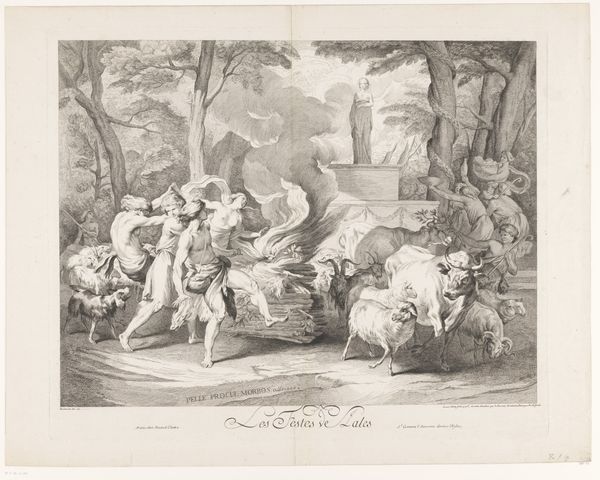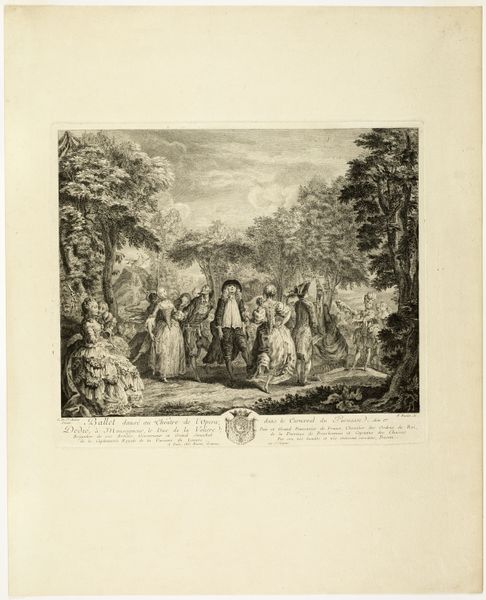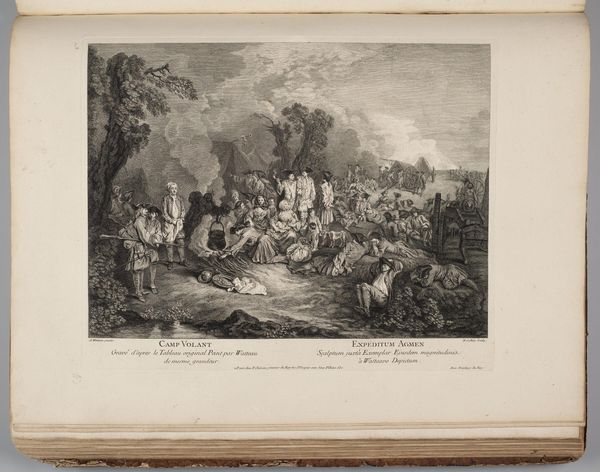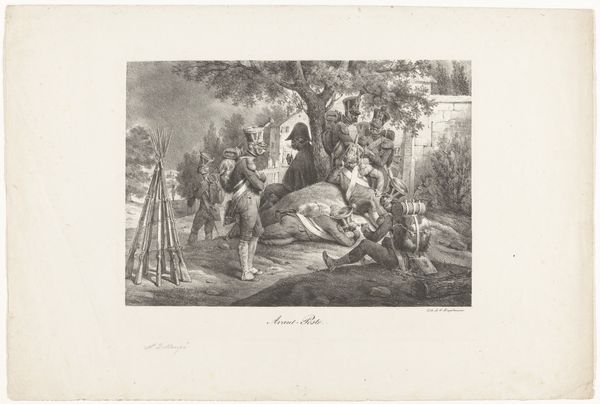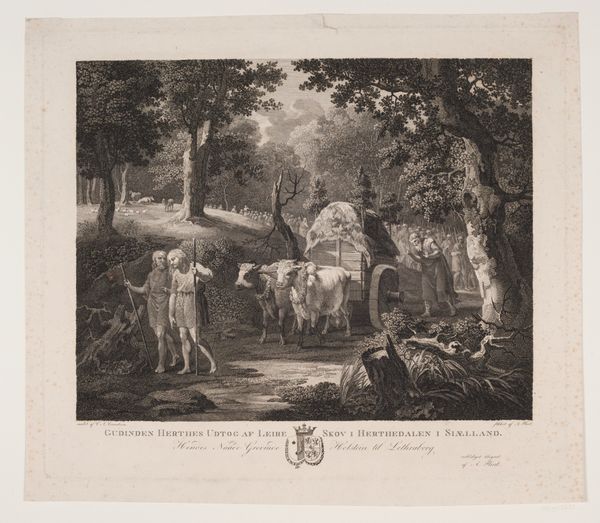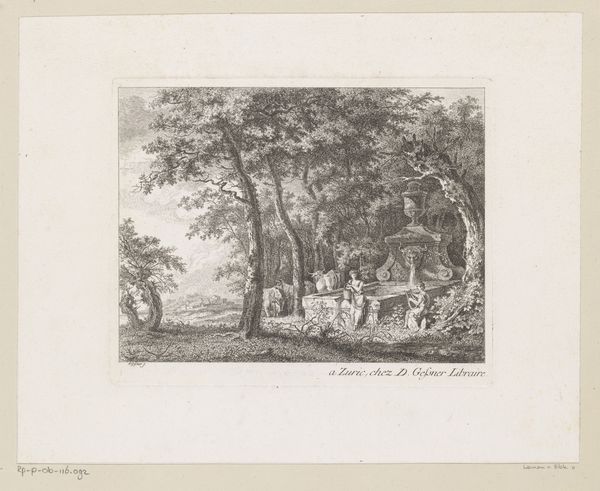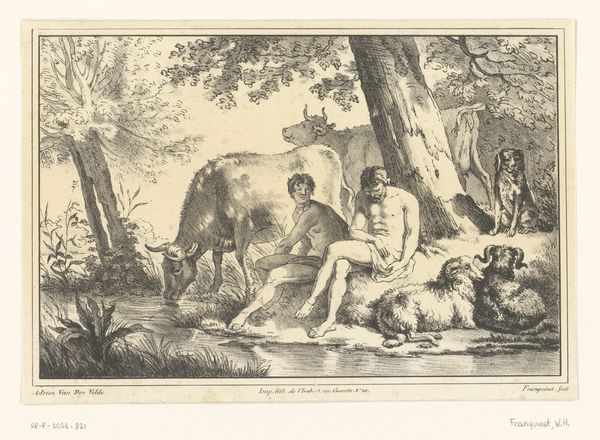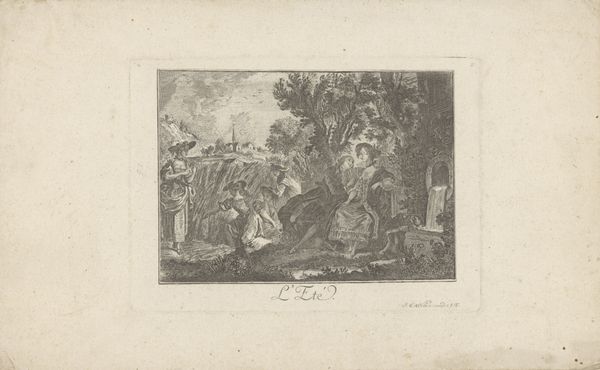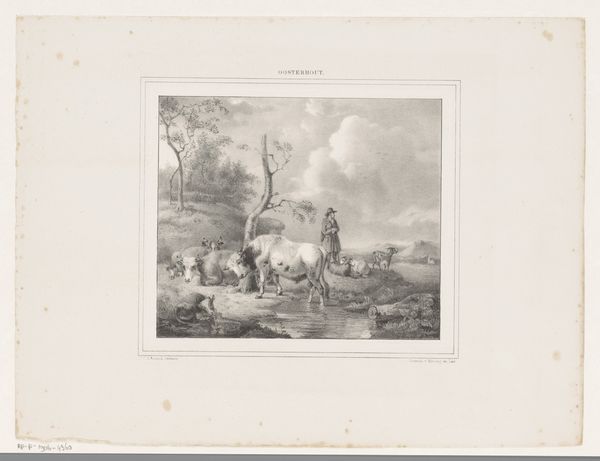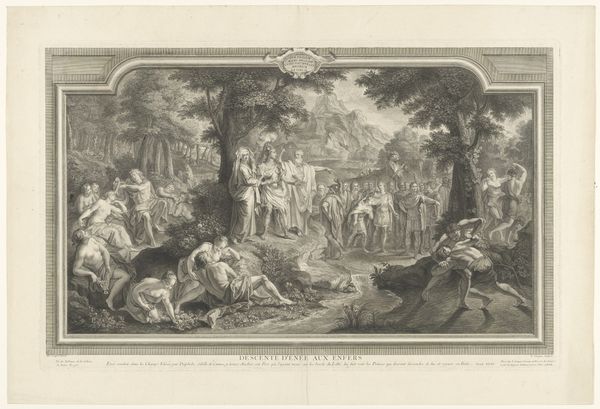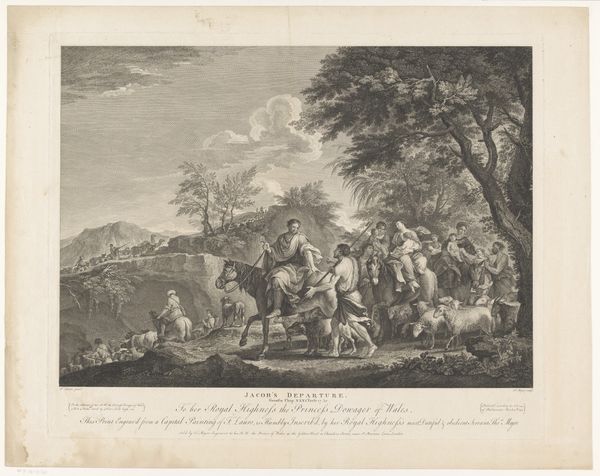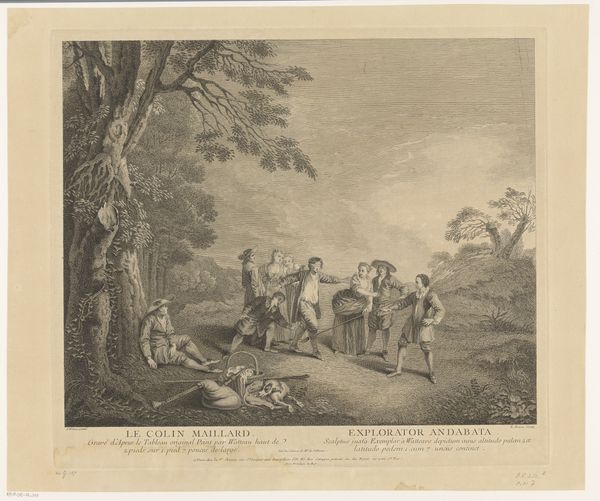
drawing, lithograph, print, paper
#
drawing
#
narrative-art
#
lithograph
# print
#
paper
#
romanticism
#
history-painting
#
nude
Dimensions: 217 × 280 mm (image); 367 × 448 mm (sheet)
Copyright: Public Domain
Curator: Oh, there's such a profound sense of melancholy radiating from this print. Look at how the light catches on the figures. Editor: We are observing “Burial,” a lithograph created by Victor Adam in 1835, now residing here at the Art Institute of Chicago. It depicts, as the title indicates, a burial scene. Curator: I am just struck by how intimate it feels despite the group of figures gathered. There's something beautifully sad in the curve of their backs, the tilt of their heads... Editor: Intimacy may not be the first word I'd choose. Works like this, under the guise of documenting, can otherize Indigenous populations, reducing complex rituals to simplistic, romanticized depictions. The almost clinical exposure of the bodies… it’s unsettling. Curator: That's an interesting perspective, unsettling how? Editor: These "history paintings" often served to justify colonial narratives. Consider the gaze of the viewer invited into this supposedly private moment of grief. Who is the intended audience, and what power dynamic does this representation perpetuate? Curator: I see your point. It does provoke questions about whose story is truly being told. The dramatic chiaroscuro...was it an aesthetic choice to romanticize the setting? Editor: Or perhaps a tool to highlight the perceived "exoticism" of the scene. This Romantic fascination with the “noble savage” often stripped away cultural complexities in favor of sensationalized narratives that served colonial interests. Curator: It is all incredibly crafted, though, isn't it? Look at the detail in the lithography, especially considering the limited technology. Editor: Indeed. However, the technical skill cannot erase the ethical considerations that arise when considering the historical context and representational politics at play. We must view with critical awareness. Curator: This work makes you pause, doesn't it? It has a haunting quality that I suspect will stay with me long after this viewing. Editor: Agreed. It serves as a potent reminder of the power dynamics inherent in representation and the critical lens through which we must engage with art, especially from this historical period.
Comments
No comments
Be the first to comment and join the conversation on the ultimate creative platform.
